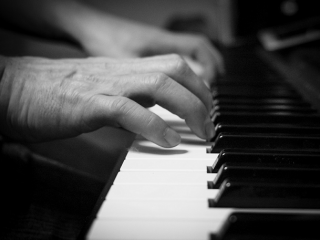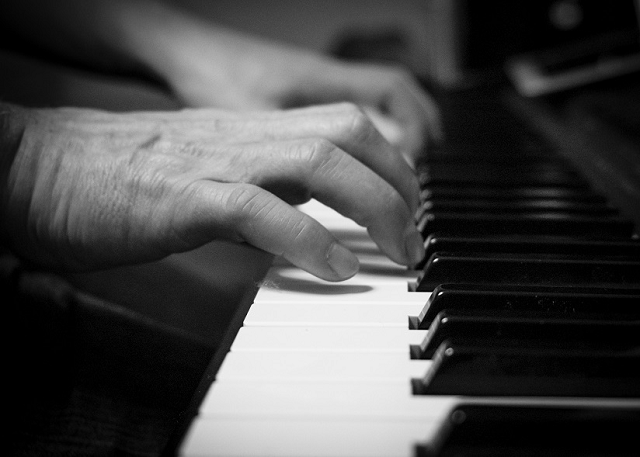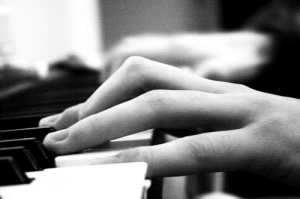

If I had a dime for every time I reminded piano students to keep their fingers curved, I’d be…well, you know…let’s just say my assets would rival those of Bill Gates (cha-ching!). Some piano teachers choose not to focus too much on piano hand posture, preferring to emphasize note-reading and rhythm skills, while others are uber-strict about it. I suspect the best approach lies somewhere in between.
THE PROBLEM
The problem appears to be that humans just don’t tend to curve their fingers naturally when they first learn to play piano. Correct piano hand posture, much like good body posture, often remains elusive. Out of the hundreds of students I’ve taught, I could count on one hand of curved fingers the ones that naturally curved their fingers without trying. A lot of young students discover in the process of practice that they can play some of the lines just as easily with straight fingers, so they resist the notion that curved fingers will end up being more effective. I figure they cannot be expected to realize that curved fingers will serve them much more effectively once they begin to tackle harder material.
And some of the more observant ones will insist they’ve seen concert pianists (or rock or pop artists) using straight fingers…so, of course, they assume they needn’t bother to be any different.
And, of course, even young female students are known to prefer keeping their nails long (another topic for this blog category), making curved fingers more problematic.
THE PROGNOSIS
To be honest, if a student truly has little or no ambition to really take their piano skills to the next level, keeping their fingers curved likely will emerge as a low priority…and likely needn’t be anything more. And, as I’ve told students many times, many easier pieces could be played with your nose or big toe…so it’s not as if straight fingers won’t work sometimes.
Curved fingers not only facilitate rapid action for fast passages, but ensure greater touch control…
Nevertheless, any student who wishes to become even an average pianist will struggle if s/he doesn’t learn to play with curved fingers. Even teachers who tend to focus more on other skills agree that curved fingers are the only viable technique for anyone who wants to play piano well.
Curved fingers not only facilitate rapid action for fast passages, but ensure greater touch control, allowing for a much greater degree of expressiveness and artistry. Pop artists who appear to be using straight fingers likely have minimal training and are playing relatively easy passages. But most good pianists (regardless of genre) use straight fingers only for certain purposes, and their default technique is curved.

Incorrect finger posture: note the straightened fingers and flat fingertips. (image source: http://photopin.com/)
THE SOLUTION
I don’t believe students should be pressured every moment throughout every lesson to keep their fingers curved. I certainly would not condone “old school”-style rapping straight fingers with a ruler! Beginners and very young students should focus more on note-reading and rhythm than on finger technique.
Nevertheless, students shouldn’t be allowed to develop bad habits. While I generally don’t focus on keeping fingers curved when a student is trying to play repertoire and method pieces, I like to emphasize it when a student is doing repetitious drills. These range from playing 5-note scales for beginners to more advanced HANON or CZERNY drills. These kinds of drills require less focus on note-reading and musicality, so they are a good occasion for emphasizing curved technique. And, as they are repetitious, they will help the student develop good habits which eventually will carry over into repertoire.
So, be expressive and musical when playing repertoire, but when you do drills…? You got it: KEEP THOSE FINGERS CURVED! (cha-ching!)
 Follow
Follow